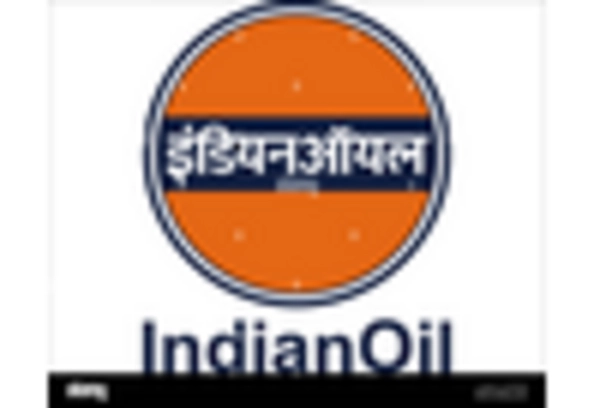Rising Fuel Demand
The increasing demand for fuel in India is a primary driver of the India Fuel Station Market. With a population exceeding 1.4 billion, the need for transportation fuels continues to grow. According to government data, the consumption of petroleum products in India has been on an upward trajectory, with a reported increase of approximately 3.5% annually. This trend is likely to persist as urbanization accelerates and more vehicles take to the roads. The expansion of the middle class, coupled with rising disposable incomes, further fuels this demand. Consequently, fuel stations are expected to proliferate to meet the needs of consumers, thereby enhancing the overall landscape of the India Fuel Station Market.
Expansion of Retail Fuel Outlets
The expansion of retail fuel outlets is a significant driver of the India Fuel Station Market. Major oil companies are increasingly investing in the establishment of new fuel stations to capture a larger market share. This trend is particularly evident in tier-2 and tier-3 cities, where the demand for fuel is rising due to increased vehicular ownership. According to government reports, the number of fuel stations in India has been steadily increasing, with projections indicating a potential growth of 10% in the next five years. This expansion not only enhances accessibility for consumers but also creates employment opportunities in the sector. As more retail outlets emerge, the competitive dynamics of the India Fuel Station Market are likely to evolve, fostering innovation and improved service delivery.
Government Initiatives and Policies
Government initiatives aimed at enhancing the energy sector play a crucial role in shaping the India Fuel Station Market. Policies promoting the establishment of fuel stations, particularly in rural and semi-urban areas, are indicative of a strategic focus on improving accessibility. The government has introduced various schemes to facilitate the licensing process for new fuel stations, which could potentially lead to a significant increase in the number of operational outlets. Furthermore, initiatives aimed at reducing dependency on imported fuels may encourage the development of alternative fuel stations, such as those for biofuels. These policies are likely to create a more robust and diversified fuel station network across the country.
Technological Advancements in Fuel Dispensing
Technological advancements in fuel dispensing systems are transforming the India Fuel Station Market. Innovations such as automated fuel dispensers and mobile payment solutions are enhancing customer experience and operational efficiency. The integration of advanced technology not only streamlines the refueling process but also improves safety and reduces human error. Moreover, the adoption of digital platforms for managing fuel inventory and sales data is becoming increasingly prevalent. According to recent statistics, fuel stations that have implemented these technologies report a notable increase in customer satisfaction and operational productivity. As technology continues to evolve, it is expected that more fuel stations will adopt these innovations, thereby reshaping the competitive landscape of the India Fuel Station Market.
Environmental Regulations and Sustainability Initiatives
The growing emphasis on environmental regulations and sustainability initiatives is influencing the India Fuel Station Market. With increasing awareness of climate change and pollution, the government is likely to enforce stricter regulations on fuel quality and emissions. This shift may prompt fuel stations to adopt cleaner technologies and alternative fuels, such as compressed natural gas (CNG) and biofuels. The transition towards more sustainable practices could also lead to the establishment of eco-friendly fuel stations, which may attract environmentally conscious consumers. As a result, fuel stations that prioritize sustainability are expected to gain a competitive edge in the evolving market landscape, thereby impacting the overall dynamics of the India Fuel Station Market.

















Leave a Comment